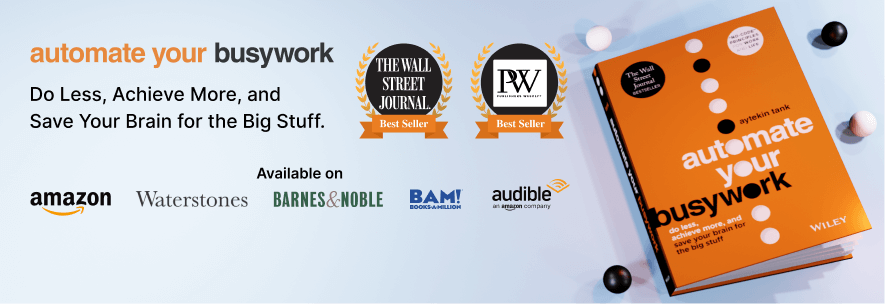You’ve heard it a thousand times. Goals should be SMART:
Specific, measurable, achievable, relevant, and time bound.
But no matter how smart your goals are — ranking your success by your ability to achieve results in a certain time frame is a slippery slope.
Which sounds like a healthier option: Skipping lunch every day for a month to drop a few pounds for vacation or adding a serving of veggies to your lunch every day?
Both will likely have a similar outcome; but one is fueled by a harmful, unsustainable, short-term goal while the other is a habit that will improve your health.
Do you think your app will have more monthly active users if you launch it by a certain date or if you set aside time to make improvements every single day?
Creating a system for continuous improvement is a lot more likely to make your app successful than simply achieving a short-term goal within an arbitrary timeline is.
Yet, I still don’t think all goals are evil. In fact, I believe they’re important for defining where you want to end up. But processes, systems, and habits will create the roadmap you need to get there.
Goals have an expiration date. Systems are forever.
I’ll be the first to admit we have goals at Jotform. As a business that needs to grow, we have specific success metrics — which is just another term for goals — to meet.
But where our real achievement lies is in developing fail-safe systems that allow us to achieve long-term goals in a way that is sustainable and repeatable. I want to share three real-life strategies that have helped me to build systems I used to grow Jotform to over 3.5 million users. . . .
1. Big Hairy Project (BHP)
You’ve heard of businesses having a BHG or “Big Hairy Goal.” But what about a BHP?
One of the most common mistakes that runs businesses into the ground is trying to accomplish too many things at once. Even great systems fail when they’re overloaded.
At Jotform we focus on one single Big Hairy Project at a time.
I’m not talking about unrealistic, short-sighted, and dangerous goals that burn out your employees and leave you feeling empty and adrift.
I’m talking about those game-changing, make-or-break projects that set you apart. They’re why in 2017 we spent 326 days on our most user-driven BHP ever — Jotform Cards.
We thought about what forms might look like a decade from now. We performed multiple week-long hackathons. We went back to the drawing board more than once.
We were able to pull this off because of the systems that we’d baked into our culture over the years; including Demo Days, regular releases, and other tactics I’ll get into later.
Especially when you’re just starting out, focusing on one project at a time allows you to develop systems to complete it successfully. And once that good habit is in place, it will carry over to future projects.
Thinking about one thing at a time instead of everything all the time will also increase your ability to make well-informed, project-oriented decisions. We know that constraints breed creativity. A well-defined BHP can cut down on rework and help align people.
How to choose the right Big Hairy Project
At Jotform, I usually give myself three months to choose our Big Hairy Project.
During those three months, I discuss possible BHPs with our team, interview our users, run option analysis, and give my thoughts time to crystalize until the best contender becomes obvious.
Once we decide on a BHP, it’s time to figure out what milestones will get us there in a year’s time.
The systems that we already have in place work for us as a team instead of being tied to specific outcomes. I feel comfortable knowing that when we follow them, they will help us achieve the results we want — no matter how different those might be from years past.
I regularly have to shoot down great ideas simply because they don’t align with the BHP. At times it’s tough to be ruthless, but I stick to this system because it’s one that has led me through many business breakthroughs since I started Jotform as a side gig over 12 years ago.
2. Always be shipping
We have a habit of releasing an update to Jotform every single day.
This is one of the systems that makes it possible to keep a team of over 100 employees in different parts of the world all working toward the same BHP.
And not only does it prove to our users that we care about making our product better for them, it forces us to stay out of the weeds and focus on what we should be doing instead of what we could be doing.
Shipping every day gives us tons of chances to conduct A/B testing. We can quickly see what users love and what they wish we would just leave the heck alone.
This iterative, agile system reflects the way we operate as a business, too.
Instead of locking our engineers in a dark room for six months and just hoping users like what we spit out, we’re finding out what they like and don’t like on a regular basis.
One of the most satisfying aspects of daily releases is that after a few months, we’ve suddenly built a whole new product or feature.
There’s no disappointment that we didn’t hit an arbitrary launch date, we don’t spend months on quality assurance testing, and we don’t suffer from anticlimactic adoption rates when it turns out our customers don’t actually like what we’ve been working on.
Our shipping system protects us against the business challenges other software companies regularly struggle with. “Shipping helps you take your theories in front of your audience, helps you get valuable feedback that can be used to test your assumptions. In the worst case it confirms that your hypothesis was incorrect.
Shipping also forces us to examine some of the minor use-cases we had ignored at the design stage. It gives us a sense of accomplishment. It keeps teams focused on the problem statement. Shipping solves business problems and provides value to users.” — Dinesh Vernekar
3. Demo Days
Every once in a while, the whole Jotform team spills from their offices at the same time. They gather in a single room. The air crackles with energy.
No, it’s not the Hunger Games. It’s Demo Day.
Richard Feynman is credited for developing the concept that if you can’t explain something simply, you don’t fully understand it.
Demo days give us the opportunity of explaining what we’re working on to a room full of diverse people is an excellent opportunity to develop a deeper understanding of 1) what we’re doing, 2) why it matters, and 3) how each team has an integral role in our overall success.
Demo Days do more than provide a fun excuse to knock off work and talk about our wins, they also provide a chance to really practice some of the building blocks of our company culture: transparency, accountability, and autonomy.
The Jotform leadership team also takes this chance to check the pulse of progress and enthusiasm toward the BHP. We can provide course correction without breathing down anyone’s neck. . . .
Businesses and people do not fail because they are bad. They fail because their systems for success are poorly devised. Or worse — they’re nonexistent.
When businesses and people aim to achieve short-term goals, they often end up unfulfilled and lost in in a tailspin of seeking the next temporary fix.
Goals are simply intangible plans. The systems you develop to fulfill them make your results teachable, repeatable, and best of all — lasting.
As James Clear put it perfectly: “Goals can provide direction and even push you forward in the short-term, but eventually a well-designed system will always win. Having a system is what matters. Committing to the process is what makes the difference.” — James Clear
At Jotform, we take our eyes off short-term prizes to focus them instead on long-term systems that lead to amazing outcomes. What about you? What you are the systems that have helped you?















Send Comment:
1 Comments:
More than a year ago
Ah, but you still have a set goal deadline - "a year's time." I see what you're saying, and obviously you can never reach a goal without conscientious and continual application of effort. I have literally just started to understand what it takes to reach a goal, and I am 58 years old with not much to show for it. I have been taking notes for three weeks and assimilating the necessary system(s) for success toward my goals. I heard about SMART goals years ago, but the *process* eluded me. I now realize that I already unconsciously knew to a certain extent. For example, I want to empty two storage units that cost me money. But before I can do that, I have to make room in the shed I have at home, et up my craft zone, organize the holiday stuff so I can get to it easily, etc... and each one of those things becomes a milestone. From there it is pretty easy to understand what I can do on a daily or weekly basis to progress. Right now I am working on my personal life, and I've dedicated 20 minutes a day (minimum) to each of 7 categories in which I want to make progress.
I can already see the difference. Having a to-do list does not create momentum.